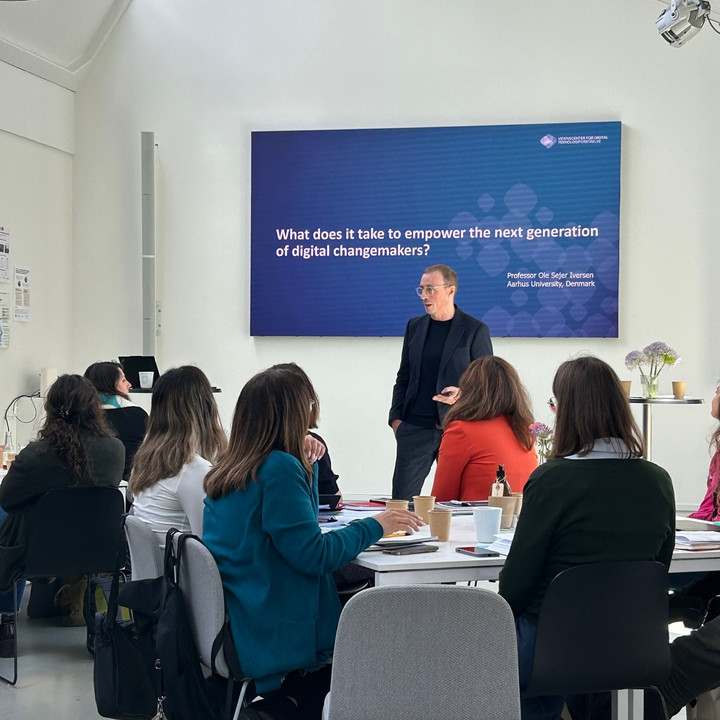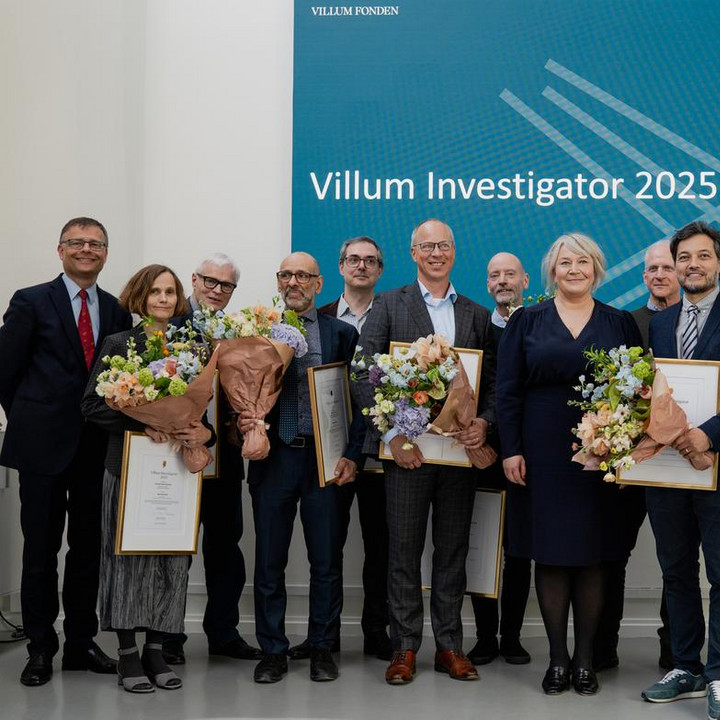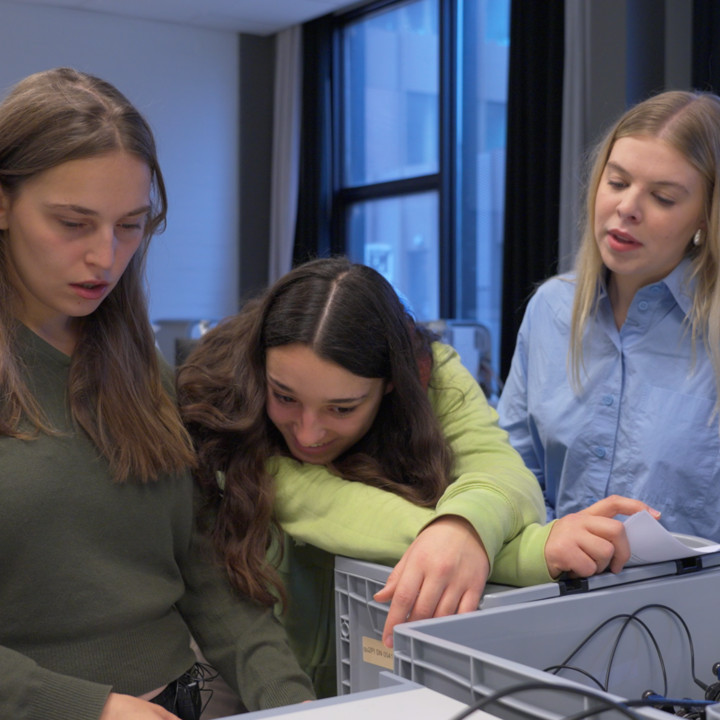Hovering above the ground: Trio behind innovative screw pile foundations receive the 2023 Building Component Award

In construction, it’s rarely the foundation that steals the headlines. But when both large and small buildings elegantly hover above the ground, while also providing space for wildlife and plant life beneath them, there’s a good reason to take notice. With the widespread adoption of screw pile foundations in construction, it has become possible to replace traditional concrete foundations with screws, saving carbon emissions, costs and time.
- Niels Thorup Madsen is a partner and CEO at BAYO.S, a distributor and producer of screw pile foundations. When he started selling BAYO.S Skruefundamenter in Denmark in 2017, he saw opportunities to expand the use of screw pile foundations in construction. Today, through skillful business development, he has established the entire supply chain, from production to distribution and assembly on an international scale.
- Lars Bo Ibsen is a professor and has been affiliated with Aalborg University since 1986, where he leads the research group Geotechnics and Offshore Foundations. He is also the research leader in the Day to Day Foundation project. Innovative and Cost-effective Solutions for Future House Building Using Ground screw pile foundation. In the project, the team develops software and hardware for the calculation and installation of foundation screws
- Jens Jakob Porsmose is a geotechnical engineer, CEO and owner of Andreasen & Hvidberg, a leading consulting firm in geotechnical advisory services for construction and infrastructure. He has deep roots in the university environment and extensive knowledge of soil conditions and alternative foundation solutions, along with many years of experience as a consulting engineer.
Screw pile foundations have traditionally been used in smaller, lightweight constructions. However, when Niels Thorup Madsen, the manufacturer and distributor of BAYOS screw pile foundations, began to wonder why no one in the industry could calculate the load-bearing capacity of a screw pile, he made the journey from Lolland to Aalborg to meet with geotechnical engineer Jens Jacob Porsmose and geotechnical and foundation professor Lars Bo Ibsen. The three of them found a shared curiosity about the possibility of introducing screw pile foundations into larger constructions, thereby saving significant amounts of CO2 from material usage and simultaneously streamlining the construction process. With their different professional approaches and unwavering determination to find solutions to significant problems, the three recipients’ teams have collaborated closely over the past six years. First, they mapped the substantial potential of screw pile foundations to optimize load-bearing capacity, taking into account how the thread affects load-bearing capacity in different soil types.
In Denmark’s largest sandbox at Aalborg University, Lars Bo Ibsen and his team can control bearing capacity, lateral pressure, vertical load, torque and much more. They are now developing an instrument with software that calculates load-bearing capacity based on sensors that, during screwing, record screwing speed, pressure and torque. Data from these sensors are then transmitted directly from the assembly machine’s sensors on the construction site to consultants in a documentation report. The new calculation model must now be approved within the Danish standards. Until the model is approved, the load-bearing capacity of the screws is documented after assembly according to the current Danish norm. The method is the first in Denmark to document the use of screw pile foundations, ensuring compliance with the Eurocode 7 building regulations.
Thanks to the pioneering efforts of business developer Niels Thorup Madsen, researcher Lars Bo Ibsen and geotechnician Jens Jacob Porsmose, the prospects for using screw pile foundations in construction have expanded significantly. Until now, this new type of foundation has been reserved for small construction projects, such as solar panels and noise barriers, because no one in the construction industry has been able to precisely document the load that screw pile foundations can bear. This has limited the expansion of screw pile foundations to large construction projects and the possibility of insuring the projects.
Curiosity on nature’s terms
However, by combining business sense and knowledge into an innovative system of software, measurement units and assembly machines, Niels Thorup Madsen, Jens Jacob Porsmose and Lars Bo Ibsen have become the first in the world to make it possible to measure the load-bearing capacity of screws, thereby setting new standards for their use in construction.
“The common denominator is probably a curiosity about exploring new avenues and a willingness to make the impossible possible. We’re not the only ones in the screw pile foundation industry, but we’re the only ones who didn’t give up when it seemed difficult to prove what screw pile foundations can actually do. We saw an opportunity to combine our skills across different areas and expand the use of screw pile foundations to many more and larger construction projects,” says business developer Niels Thorup Madsen.
“Documentation has been the major challenge because whoever can measure and document the load-bearing capacity can also utilize the strength of the ground more effectively. Here, the developed software and hardware solution has played a crucial role, making it possible for us to measure the friction between the screw and the ground, and these measurements can be converted into load-bearing capacity. We can adapt the work process to the geotechnical properties and strength ratios of the ground so that the installer on the construction site can almost immediately determine if the screws are properly installed, and thereby provide documentation that can be sent to the customer,” adds geotechnician Jens Jacob Porsmose.
The Building Component Award is granted by VILLUM FONDEN and the VELUX FOUNDATIONS. The award is granted to one or more persons who have made an outstanding contribution to the value, importance and practical application of building components in day-to-day life.
The award is granted every two years.
The founder of the foundations, Villum Kann Rasmussen, started his own business in 1941 and worked intensively with building components for the rest of his life. His best known building component is the VELUX skylight.
The award was granted for the first time in its current form in 2015 to the entrepreneur, architect and designer Claus Dyre for his invention and commercialisation of the Unidrain line drain. In 2017, the prize was awarded to Peer Leth for his efforts in developing and refining wood-based acoustic panels at the company Troldtekt. In 2019, Lauritz Rasmussen received the Building Component Prize for his persistent efforts to promote the use of prefabricated and industrialized timber elements in construction. In 2021, Claus Juul Nielsen received the prize for his work in revitalizing one of the world’s oldest building materials: brick.
The jury for this year's award recipients is:
- Anna Mette Exner, owner of Anna Mette Exner Arkitektur
- Claus Juul Nielsen, executive director, Gamle Mursten
- Frank Jensen, excutive director, Søren Jensen Rådgivende Ingeniørfirma
- Jacob Steen Møller, prev. director of campus, DTU
- Mette Tony, partner, Praksis Arkitekter, chair of the jury
- Torben Sørensen, vice president, VKR Holding A/S
Collaboration opens new doors
With this trio’s innovative and comprehensive approach, the construction industry now has a tool that can propel the sector closer to the increasingly necessary green transformation, without compromising on aesthetics or price.
“If we want to create real green innovation in construction, it’s imperative that we integrate existing expertise and start building with nature instead of around it.” And here, the three recipients have made an exemplary effort in gathering vast experience and insights from different areas into one groundbreaking project that incorporates sustainability and flexibility right from the beginning,” says Mette Tony, chairp of the Building Component Award jury.
The three laureates will each be presented with DKK 100,000 at a ceremony in the Villum Window Collection.



